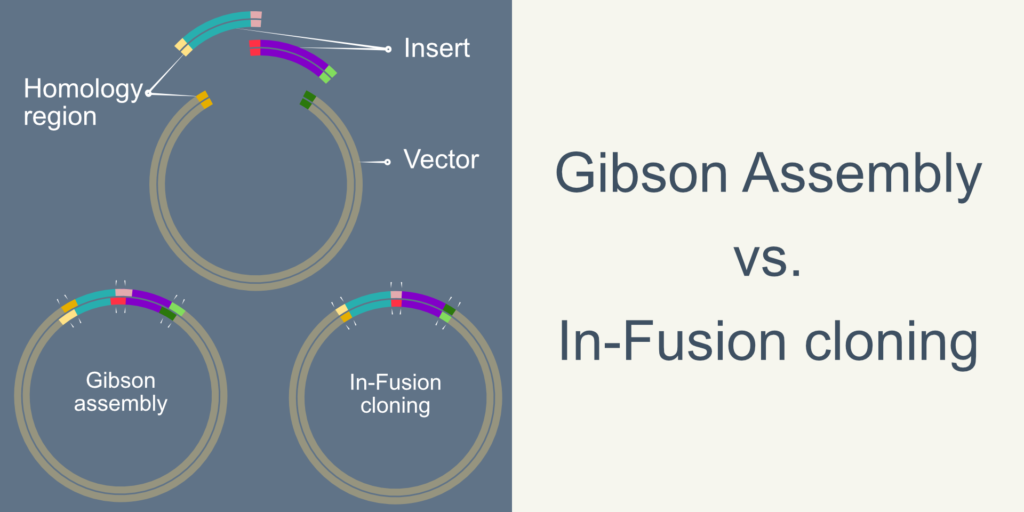Gibson assembly vs. In-Fusion cloning

The Gibson assembly, NEBuilder HiFi DNA Assembly Cloning, In-Fusion cloning, and Golden GATEway clonings are advanced cloning methods that do not generate scars. All of these cloning methods directionally insert one or multiple DNA fragments in the vector of choice. The golden GATEway uses the type IIS restriction enzymes, cutting the DNA outside the recognition sequence (link for golden GATEway). Except for golden GATEway cloning, all other cloning methods listed above are exonuclease (either 5′ – 3′ or 3′ – 5′) based and depend on a short stretch of homology at their ends.
The In-Fusion cloning method uses the 3′ – 5′ exonuclease, resulting in 5′ overhangs. The complementary 5′ overhangs of the duplex DNA fragments anneal together (insert-insert or insert-vector) makes duplex–duplex recombinant intermediates. The In-Fusion reaction mixture contains single-stranded DNA binding proteins that bind to any single-stranded DNA outside the complementary region, enhancing the stability of recombinant molecules. The nicks will be sealed in E.coli after transformation.
The Gibson assembly uses a mixture of three enzymes. T5-exonuclease removes the nucleotides from the 5′ ends, generating DNA with 3′ overhangs. The complementary single-stranded overhangs anneal together, forming an annealed duplex. The 3′ ends effectively prime the polymerization; the Phusion DNA polymerase adds dNTPs and fills the gap. The DNA ligase enzyme seals the nicks and generates joint molecules (inserts).
NEBuilder HiFi is an improved version of Gibson assembly and uses a method similar to it but with high fidelity DNA polymerase. This method has an advantage over Gibson assembly by bridging two ds DNA fragments with a single-stranded oligo. It also efficiently works if the 3′ or 5′ ends contain mismatches by removing the mismatched nucleotides.
The below illustration provides the significant differences between Gibson assembly and In-Fusion cloning.
Figure 1. Schematic illustration showing the differences between Gibson assembly and In-Fusion cloning methods.